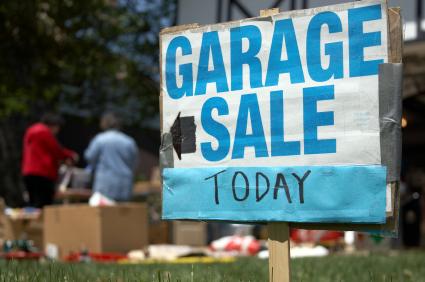Whether it’s called a garage sale, yard sale, moving sale, or rummage sale, you’re likely to find something worthwhile! Local garage sales are a great place to find used furniture. Prices can vary widely; someone just trying to get rid of extra clutter will price their products lower than someone trying to scrap together enough money for this month’s rent! Look for area garage sales labeled “multi-family” or “community”; they can be a refinishing jackpot! Make sure you bring plenty of money and a truck to haul away your finds.
Tips for Buying From Garage Sales
- Driving around hoping to spot a colored sign is for the birds! Check your local classifieds, community calendar, or city website for dates and times. Craigslist also has a garage sale listing; click here for more information on using Craigslist to find used furniture.
- Use Mapquest or a similar site to help you plan the most efficient route.
- Wear comfortable clothes and bring snacks and a bottle of water. Garage-saling can quickly become an all-day affair.
- Bring a tape measure and tie-downs or bungee cords. That armoire is no bargain if it won’t fit through your front door! You’ll also need some way to secure finds for the drive home.
- Be prepared to haggle. If a seller won’t come down on price, ask if they’d be willing to throw in a freebie, say, buy the rocking chair at full price and get the afghan as a bonus.
- Bring money in small denominations. If you negotiate the price of a dresser down from $40 to $20, then pay with a fifty dollar bill, you’ll look and feel like a tool.
- Be polite. Don’t show up before posted sale times, make a mess of the seller’s yard, or act rude when you’re negotiating.
- If you’re looking for the best selection, go early; if price is your main concern, head out later in the day, when sellers are tired and marking down unsold merchandise.
Estate Sales
Estate sales, in which an entire household worth of stuff is up for grabs, can be a fantastic resource for finding good furniture, especially if you’re a fan of antiques. Here, too, prices can range from dirt-cheap to very expensive.
The nicest thing about buying from estate sales is that, if you and the seller have the same sense of style, you can furnish your whole house in one stop. Ask if you can buy a lot of furniture (for example, the whole bedroom set) at a discount. Frequently, the seller will be happy to avoid the work of selling the pieces individually.
One important thing to remember about estate sales is that it pays to be sensitive. While garage sales are just a way to clear out the clutter, estate sales are necessary to liquidate an estate in the event of a death, divorce, or bankruptcy, or when an elderly person must move into a nursing home. Be careful what you say!
Flea Markets and Swap Meets
Flea markets and swap meets are like huge, multi-vendor yard sales, and quality varies widely. One significant difference between a flea market and a swap meet is that at flea markets, individuals must purchase a space to sell their goods. At swap meets, everyone who attends is welcome to sell things; there’s usually an entrance fee to get in.
You might be lucky enough to have a flea market operating regularly in your area- every weekend, for example. Swap meets and tag sales usually occur with less frequency- annually or semi-annually, usually during the spring and summer. They’re common at big music festivals.
Flea market items on the West Coast tend to be miscellaneous low dollar deals, but if you live in the Midwest or on the East Coast, you’re more likely to encounter real, valuable antiques. Sometimes sellers will want cash only; other sellers may be open to bartering. Knowing what to look for is important, especially if you’re in the market for antiques. Flea markets have some great deals, but they’re also infamous for dealing in fakes.

